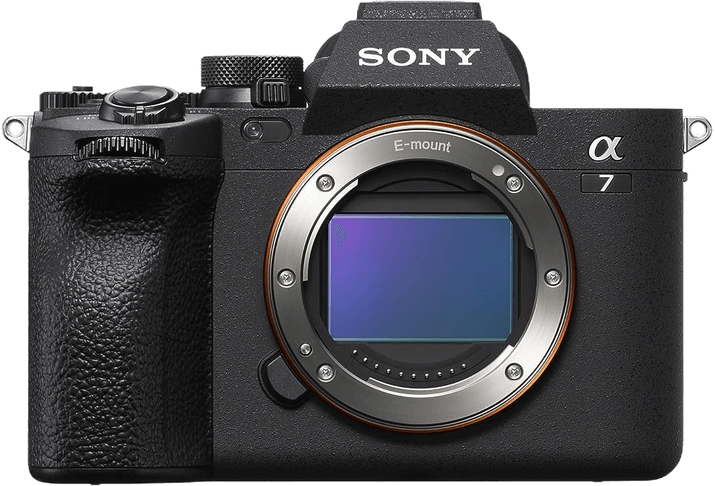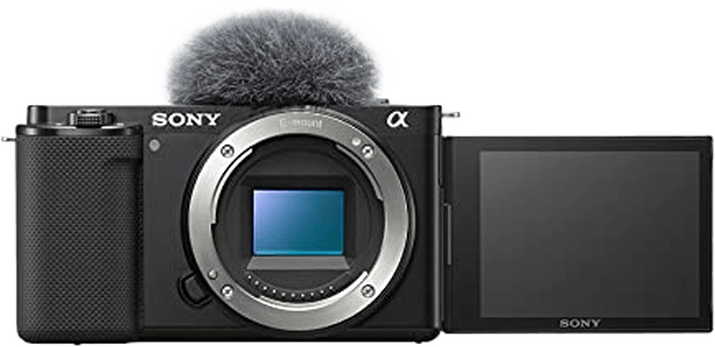Sony a7 IV vs ZV-E10 Comparison
Sony a7 IV

Sony ZV-E10

The Sony a7 IV outshines the Sony ZV-E10 with a 19-point lead, scoring 84/100 compared to the ZV-E10’s 65/100. Both cameras are mirrorless and were released in 2021, with the a7 IV announced on October 21st and the ZV-E10 on July 27th. They share similarities in their camera type and release year.
The Sony a7 IV boasts a higher score and a more expensive launch price of $2499. Its larger size (131 x 96 x 80mm) and heavier weight (659g/1.45lbs) suggest a more feature-packed and robust camera.
On the other hand, the Sony ZV-E10 offers a more affordable option at $700. Its smaller size (115 x 64 x 45mm) and lighter weight (343g/0.76lbs) make it a more portable and convenient choice for casual users.
Taking all factors into account, the Sony a7 IV stands out as a superior camera, while the Sony ZV-E10 provides a budget-friendly alternative for those seeking portability and affordability.
Sony a7 IV vs ZV-E10 Overview and Optics
The Sony a7 IV outperforms the Sony ZV-E10 in optics, scoring 85/100 compared to the ZV-E10’s 69/100. Both cameras share some specifications, such as having a CMOS sensor and a similar shooting speed, with the a7 IV at 10fps and the ZV-E10 at 11fps. Furthermore, they both utilize Sony’s lens mounts, with the a7 IV using the Sony FE mount and the ZV-E10 using the Sony E mount.
The a7 IV surpasses the ZV-E10 in several aspects. It boasts a higher megapixel count at 33, compared to the ZV-E10’s 24, allowing for more detailed and higher resolution images. The a7 IV also features a superior sensor, with a DXOMARK score of 97, compared to the ZV-E10’s 86. Additionally, the a7 IV has a full-frame sensor, while the ZV-E10 has an APS-C sensor, providing better low-light performance and a shallower depth of field. The a7 IV also offers image stabilization, which the ZV-E10 lacks, making it more suitable for handheld shooting and video recording.
The ZV-E10, however, does have a slight advantage in its aspect ratio of 4:3, compared to the a7 IV’s 3:2. This ratio allows for a more square format that is better suited for social media platforms like Instagram.
Considering these factors, the Sony a7 IV is the clear winner in terms of optics, offering higher image quality, better sensor performance, and image stabilization. The Sony ZV-E10, while not as strong in optics, may still be suitable for users who prioritize a more social media-friendly aspect ratio.
Sony a7 IV vs ZV-E10 Video Performance
The Sony a7 IV and Sony ZV-E10 both have a video score of 91/100, indicating that these cameras have similar video capabilities. They share several common specifications, such as 4K max video resolution, 120fps max video frame rate, and built-in time-lapse functionality. However, there are slight differences in their performance.
The Sony a7 IV has an advantage in max video dimensions with 3840 x 2160 pixels, offering slightly higher video resolution compared to the Sony ZV-E10’s 3840 x 1920 pixels. This difference results in more detailed and sharper visuals when shooting videos with the a7 IV.
On the other hand, the Sony ZV-E10 does not outshine the a7 IV in any specific video aspect, as they share the same video score and most specifications. The only difference is the slightly lower max video dimensions, which may not be a significant drawback for casual users or those who prioritize other features over video quality.
Considering the similarities and differences, both the Sony a7 IV and Sony ZV-E10 are excellent choices for video shooting. The a7 IV holds a slight edge due to its higher max video dimensions, providing better video quality. However, the ZV-E10 remains a competitive option, especially for users who do not require the extra resolution offered by the a7 IV. The choice between these two cameras ultimately depends on individual preferences and specific requirements for video performance.
Sony a7 IV vs ZV-E10 Features and Benefits
The Sony a7 IV wins the features comparison with a score of 83/100, while the Sony ZV-E10 scores 68/100. Both cameras share several specifications, including a 3-inch screen size, touchscreen functionality, flip screen, lack of GPS, and the presence of WIFI and Bluetooth connectivity.
The Sony a7 IV surpasses the ZV-E10 in screen resolution, boasting 1,040,000 dots compared to the ZV-E10’s 920,000 dots. This higher resolution provides clearer and more detailed image previews and camera settings, enhancing the overall user experience.
On the other hand, the Sony ZV-E10 does not hold any advantages over the a7 IV in terms of features. Both cameras share the same core specifications, with the a7 IV only having an edge in screen resolution.
Considering these points, the Sony a7 IV is the superior camera in terms of features. Its higher screen resolution offers an improved user experience, while the other shared specifications ensure that both cameras provide users with essential functions such as connectivity and screen flexibility. The Sony ZV-E10 does not have any distinct advantages in this comparison, making the a7 IV the clear winner.
Sony a7 IV vs ZV-E10 Storage and Battery
The Sony a7 IV outperforms the Sony ZV-E10 in storage and battery with a score of 76/100 compared to the ZV-E10’s 24/100. Both cameras share some common specifications, such as accepting SD memory cards and using rechargeable lithium-ion batteries.
The a7 IV’s superior score is due to its dual memory card slots, which accept both CFexpress Type A and SD cards, providing more storage options and backup capabilities. Additionally, the a7 IV boasts a longer battery life of 580 shots, compared to the ZV-E10’s 440 shots, and uses the more advanced NP-FZ100 battery. The a7 IV also supports USB charging, increasing its convenience for on-the-go users.
The ZV-E10, while falling behind in overall storage and battery performance, does have a slight advantage in memory card compatibility, as it accepts Memory Stick Pro Duo cards in addition to SD/SDHC/SDXC cards. However, this does not compensate for its single memory card slot, shorter battery life, and lack of USB charging.
Ultimately, the Sony a7 IV offers superior storage and battery capabilities, making it the better choice for photographers and videographers who require more robust options and longer shooting sessions. The ZV-E10 may be suitable for users with less demanding storage and battery needs, but the a7 IV is the clear winner in this comparison.
Sony a7 IV vs ZV-E10 – Our Verdict
Are you still undecided about which camera is right for you? Have a look at these popular comparisons that feature the Sony a7 IV or the Sony ZV-E10:

